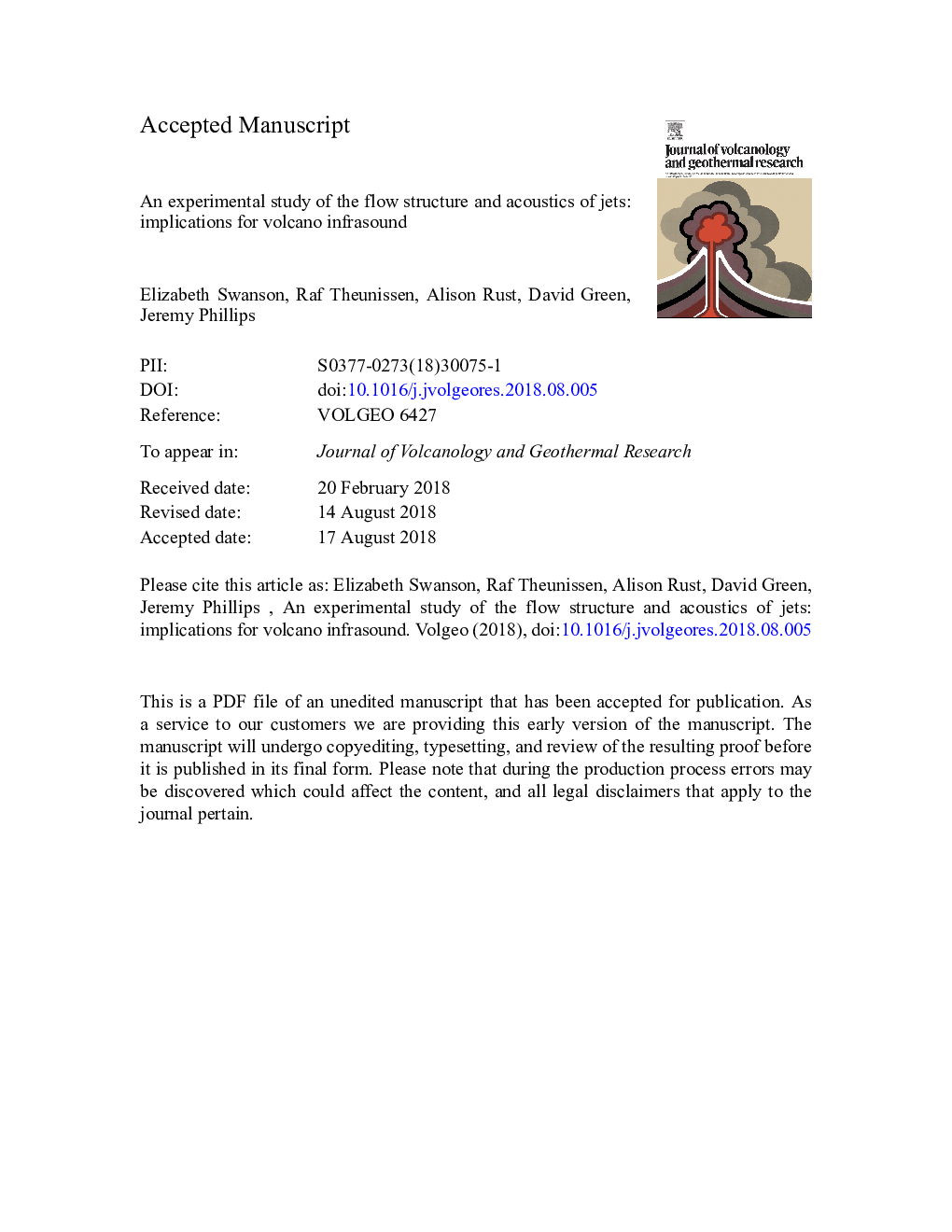| Article ID | Journal | Published Year | Pages | File Type |
|---|---|---|---|---|
| 10224348 | Journal of Volcanology and Geothermal Research | 2018 | 46 Pages |
Abstract
Aeroacoustic jet noise theory describes the relationship between acoustic signals and jet operating parameters. Based on empirical aeroacoustic relationships, a link between peak frequency and amplitude and jet diameter and velocity has been used by volcano acousticians to return the operating parameters of column generating volcanic eruptions. There are however significant differences between the nozzle geometries and structures of flows studied in the aeroacoustic literature and flows emitted from volcanic vents. These differences raise questions as to the validity of applying engineering relationships to volcanic eruptions. Combining particle image velocimetry and acoustic data we investigated the flow structures, acoustic signals and dominant source locations of jet flows emitted from three simple nozzle geometries (convergent, straight and divergent). Flows from the straight and divergent nozzles exited in a more developed flow regime than those emitted from convergent nozzles. While for the convergent nozzles dominant sound sources were located within the jet flow, the dominant signals from the straight and divergent nozzles were located in the region of the nozzle exit. Consequently, for the straight and divergent nozzles it was not possible to differentiate between signals generated by the jet flow and those generated by internal sound sources without beamforming analysis. In order to better replicate the volcanic case and in contrast to studies for industrial applications, our experimental test section was not engineered to minimise internal noise. Without acoustic treatment such as screens, choke plates and paddles, jet noise signals were contaminated by signals generated within the test rig and so, even for the convergent nozzles, the aeroacoustic relationships derived from engineering studies could not be used to retrieve the jet operating parameters. Our results indicate that in the volcanic case, the raw acoustic spectra will contain signals generated by both in-conduit and above-vent processes. Therefore inversions for volcanic jet parameters such as mass eruption rate from standard aeroacoustic relationships may be unreliable.
Related Topics
Physical Sciences and Engineering
Earth and Planetary Sciences
Geochemistry and Petrology
Authors
Elizabeth Swanson, Raf Theunissen, Alison Rust, David Green, Jeremy Phillips,
